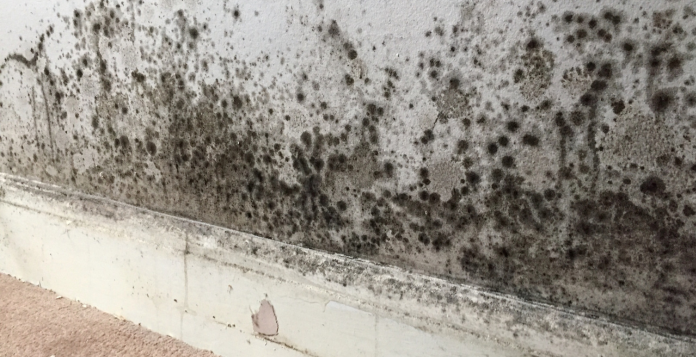Understanding Mould Growth in the UK: Types and Causes
- by Bhavi Bhudia
- Hits: 3550

Mould growth is a prevalent issue for homeowners and property managers across the UK. Not only can mould cause structural damage, but it also poses health risks to occupants.
Understanding the different types of mould growth and their underlying causes is essential for effective prevention and remediation efforts. We'll explore various types of mould common in the UK and the factors contributing to their proliferation.
Types of Mould Growth:
1. Cladosporium:
- Cladosporium is one of the most common indoor moulds in the UK.
- It appears as green, brown, or black spots and often grows on damp surfaces like walls, ceilings, and fabrics.
- Cladosporium can trigger respiratory issues, particularly in individuals with allergies or asthma.
2. Aspergillus:
- Aspergillus mould is prevalent both indoors and outdoors in the UK.
- It thrives in warm, damp conditions and can be found on surfaces such as damp walls, insulation, and carpets.
- Certain species of Aspergillus produce mycotoxins, which can pose health risks when inhaled.
3. Stachybotrys (Black Mould):
- Stachybotrys chartarum, commonly known as black mould, can be found in damp, poorly ventilated areas in UK homes.
- It typically grows on water-damaged materials like wood, wallpaper, and drywall.
- Black mould releases mycotoxins that can cause severe health problems, including respiratory issues and allergic reactions.
4. Penicillium:
- Penicillium moulds are prevalent in the UK and can be found indoors on damp surfaces like walls, ceilings, and fabrics.
- They often appear blue or green and spread rapidly in moist conditions.
- Some species of Penicillium produce mycotoxins and can exacerbate respiratory ailments.
5. Alternaria:
- Alternaria is a common outdoor mould in the UK that can also grow indoors.
- It thrives in damp environments such as bathrooms, kitchens, and basements.
- Exposure to Alternaria spores can trigger allergic reactions and exacerbate asthma symptoms.
Causes of Mould Growth in the UK:
Damp Weather:
- The UK's climate, characterized by frequent rainfall and high humidity levels, creates favourable conditions for mould growth.
- Moisture from rain, condensation, and humidity can penetrate buildings, leading to dampness and mould infestations.
Condensation:
- Condensation often occurs in poorly ventilated areas of UK homes, such as bathrooms and kitchens.
- Excess moisture from activities like cooking, bathing, and drying clothes indoors can contribute to condensation and mould growth.
Poor Insulation:
- Inadequate insulation in UK homes can lead to cold spots where condensation accumulates, promoting mould growth.
- Improving insulation and ventilation can help prevent condensation and reduce the risk of mould infestations.
Water Leaks:
- Leaky roofs, pipes, and windows are common sources of water intrusion in UK homes, leading to dampness and mould growth.
- Promptly repairing leaks and addressing water damage is essential for preventing mould infestations.
Lack of Ventilation:
- Poor ventilation exacerbates moisture buildup and contributes to mould growth in UK homes.
- Properly ventilating areas prone to dampness, such as bathrooms, kitchens, and basements, can help prevent mould infestations.
Mould growth is a persistent problem for homeowners and property managers in the UK, exacerbated by the country's damp climate and ageing housing stock. By understanding the different types of mould common in the UK and addressing underlying causes such as dampness, condensation, and poor ventilation, individuals can take proactive measures to prevent mould infestations and maintain a healthy indoor environment. Regular maintenance, including insulation upgrades, leak repairs, and improved ventilation, is crucial for minimizing the risk of mould growth and ensuring the well-being of occupants.
